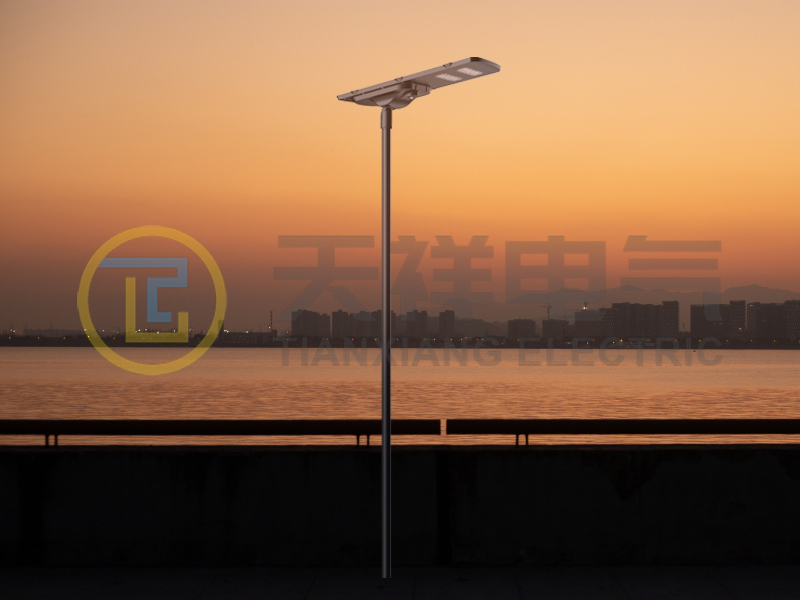All in one solar street light controller plays a vital role in ensuring the efficient operation of solar street lights. These controllers manage battery charging and discharging, control LED lights, and monitor overall system performance. However, as with any electronic device, they may encounter issues that require debugging and optimization to ensure optimal functionality. In this article, we will explore the process of commissioning and optimizing an all in one solar street light controller to maximize its performance and longevity.
Learn about all in one solar street light controllers
Before delving into the commissioning process, it is necessary to understand the basic functions and components of the all in one solar street light controller. These controllers are designed to regulate the flow of energy within a solar street light system, ensuring that the batteries are charged effectively and the LED lights operate at the required brightness levels.
Key components of all in one solar street light controller
1. Solar charge controller: This component regulates the voltage and current of the solar panel to charge the battery. It protects the battery from overcharging and deep discharge, thereby extending its lifespan.
2. LED driver: The LED driver controls the power of the LED light and can dim and adjust the brightness according to the ambient light conditions.
3. Battery Management System: This system monitors the battery’s state of charge, temperature and voltage to ensure optimal performance and prevent damage from overcharging or deep discharge.
Debugging all in one solar street light controller
When an all in one solar street light controller encounters a problem, it is crucial to follow a systematic approach to identify and resolve the underlying problem.
1. Visual Inspection: Begin by visually inspecting the controller and its connections. Look for any signs of physical damage, loose connections, or corrosion that may affect controller performance.
2. Check the power supply: Verify that the solar panels are producing enough power and that the battery is receiving the correct voltage from the solar charge controller. Insufficient power may cause the LED light to dim or flicker.
3. Battery health check: Use a multimeter to measure the battery voltage and make sure it is within the recommended range. Additionally, check the battery connections and terminals for signs of corrosion or poor contact.
4. LED light test: Use a light meter to test the LED light output to ensure it is providing the required illumination. If the light output is insufficient, check for any issues with the LED driver and connections.
5. Sensor calibration: If your solar street light contains a light sensor for automatic operation, calibrate the sensor to ensure it accurately detects ambient light levels and triggers the LED lights accordingly.
Optimized all in one solar street light controller
In addition to commissioning, optimizing the performance of all-in-one solar street light controllers is critical to maximizing energy efficiency and service life. Here are some tips for optimizing your controller:
1. Firmware updates: Check if there are any available firmware updates for the controller and make sure it is running the latest version. Updated firmware may include performance enhancements and bug fixes.
2. Programming customization: Some all-in-one solar street light controllers allow programming customization to adjust charging parameters, dimming profiles and other settings according to specific project requirements.
3. Regular maintenance: Implement a regular maintenance schedule to clean solar panels, check connections, and make sure the entire system is free of debris and obstructions that could affect performance.
4. Temperature compensation: If the solar street light is installed in an area with large temperature changes, you can consider using a controller with temperature compensation to optimize battery charge and discharge parameters.
5. Performance monitoring: Use monitoring tools to track the performance of your solar street light system, including battery voltage, charging current, and LED light output. This data can help identify any performance issues early on.
By following these commissioning and optimization techniques, operators can ensure that all in one solar street light controllers reach their full potential to provide reliable, efficient lighting solutions for a variety of outdoor applications.
In short, the all in one solar street light controller is an integral part of the solar street light system, and correct debugging and optimization are crucial to maintaining its performance and life. By following a systematic approach to commissioning and implementing optimization strategies, operators can maximize the efficiency and reliability of solar street light controllers, ultimately contributing to sustainable and energy-saving outdoor lighting solutions.
Welcome to contact all in one solar street light supplier Tianxiang for more industry news.
Post time: Aug-29-2024





